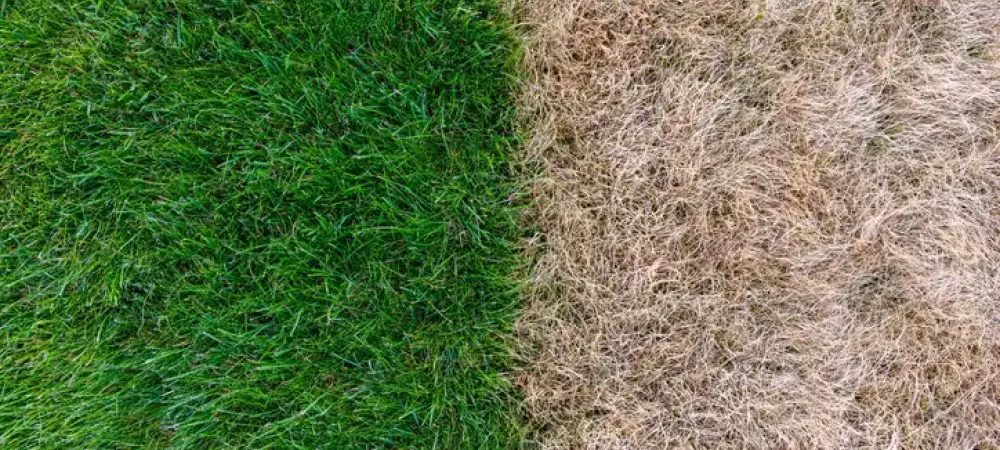Late Summer Lawn Care Tips for the Southeast

Late summer lawn care isn’t about making big changes—it’s about fine-tuning the details. Adjusting your mowing height, watering schedule, and fertilization plan can make a meaningful difference in how your lawn weathers the heat. These tips will help you protect your turf from stress, limit pest activity, and lay the groundwork for a strong fall recovery.
Why Late Summer Lawn Care Matters in the Southeast
As the calendar moves into August, lawns in the Southeast face their toughest seasonal stretch. The combination of persistent heat, inconsistent rainfall, and high humidity can strain even the most well-maintained turf. Applying the right late summer lawn care tips now can help keep your lawn healthy through the final weeks of summer—and set the stage for a smoother fall recovery.
Challenges of July Heat and Humidity
In the Southeast, summer weather doesn’t just mean higher temperatures, it brings increased stress on both the soil and turf. Hot days push soil temperatures well above 80°F, often leading to faster moisture evaporation and greater risk of drought stress. Humid nights limit the lawn’s ability to cool down and recover, which can contribute to disease or pest outbreaks.
Southern grasses like Bermuda, Zoysia, and Centipede are built to handle heat, but even they struggle when rainfall drops or when compacted soil blocks water absorption. Localized dry spots, lawn thinning, and pest activity tend to spike during this period, particularly in clay-heavy or poorly draining areas common across these states.
Watering Tips: When and How Much
Early morning, ideally between 5 a.m. and 9 a.m., is the best time to water your lawn. This timing allows moisture to soak in before the heat intensifies and minimizes evaporation loss. It also prevents prolonged moisture sitting on blades overnight, which can promote fungal diseases.
Rather than watering daily, aim for deeper soakings 2–3 times per week. A good rule of thumb is to apply about 1 inch of water per week, including rainfall. This encourages deep root growth and builds resilience against heat and drought.
Signs of Under- vs. Overwatering
Underwatered lawns often appear dull grayish-green, wilt easily, and feel crunchy underfoot. Overwatered lawns may look patchy, feel spongy, or even develop fungal issues. Adjusting your watering schedule based on these cues can make a significant difference.
Mowing Heights for Summer Heat
- Bermuda: 1.5–2 inches
- Zoysia: 2–2.5 inches
- Centipede: 1.5–2 inches
Taller grass blades help shade the soil, reduce moisture loss, and protect the crown from direct sun exposure. Scalping your lawn, which is cutting it too short, can cause irreversible stress during high heat. It removes too much leaf tissue, weakens root systems, and invites weed invasion or disease.
Sharpen Blades to Avoid Stress
Dull mower blades tear rather than cleanly cut, leading to brown tips and increased vulnerability to stress. Sharpen your blades every 20–25 mowing hours to ensure a clean cut and healthier lawn.
Fertilizing With Caution
Applying high-nitrogen fertilizers during peak heat can scorch your lawn or encourage shallow, fast growth that wilts easily. If your lawn is already under stress, additional fertilizer can do more harm than good.
When to Skip or Reduce Nitrogen
If temperatures consistently exceed 85°F, consider skipping your next scheduled fertilization or choosing a product with little to no nitrogen. The goal is to maintain growth during heat stress, not push.
Instead of summer fertilization, focus on soil health. Compost topdressing or humic acid treatments can support microbial life and root development without stimulating excess top growth. Save heavier nitrogen applications for cooler fall weather.
Spotting Turf Stress and Pests
Look for areas that are fading in color, feel crunchy to the touch, or bounce back slower after foot traffic. These symptoms usually start on sunny slopes, compacted zones, or spots near hardscapes that reflect heat.
Common Lawn Pests
These pests thrive in late summer heat:
- Chinch bugs suck sap from grass blades, leaving behind yellow patches that mimic drought.
- Spittlebugs create foamy residue and damage Centipede grass.
- Fall armyworms feed rapidly and can wipe out sections of lawn in days.
Regular inspection helps you catch these issues early before major damage occurs.
When to Contact a Lawn Care Professional
If turf discoloration spreads quickly, or pest activity becomes apparent despite good cultural practices, it may be time to consult a lawn care expert. Proper identification and treatment timing can prevent lasting damage.
Conclusion
Late summer doesn’t have to spell disaster for your lawn. With consistent monitoring, smart mowing, and thoughtful watering, your turf can hold up through the heat and be ready to bounce back in fall. Pay attention to signs of stress or pest pressure each week, and don’t hesitate to seek professional advice if conditions worsen.
Taking small steps now can prevent bigger issues later—set your lawn up for success with the right care during these final weeks of summer. If you’re looking for an easier, more efficient way to maintain a healthy lawn, reach out to Unlimited Lawn Care™ for professional support across Georgia, South Carolina, and Alabama.
